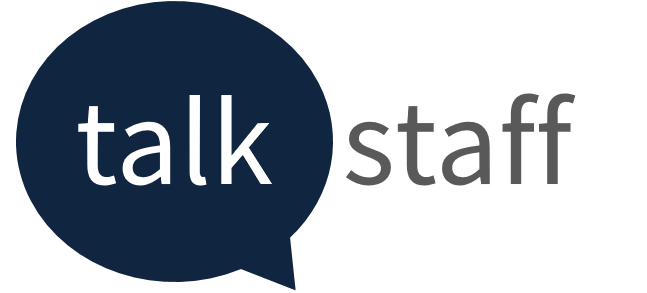6 Leadership Trends you need to watch in 2024
- October 31, 2023
- Posted by: Hannah Ingram
- Category: Organisational Culture

Leadership Trends
Effective leadership is crucial for the success of your business. To evolve as a leader you need to be aware of leadership trends too, as the workplace continues to transform and innovate.
The world of work has evolved in such a way that standing still, as a leader, can leave you missing out on opportunities very quickly, both as a leader and an organisation. Being ahead of the game is a great way to avoid this.
So the question is, how do you adapt for the changes that are coming, to guide your people through this journey and equip yourself and your fellow leaders with the right leadership skills for 2024?
Here’s 6 trends to be aware of:
1. Gen Z work ethics and inter-generational workforces


Gen Z are now entering the workforce and climbing the corporate ladder, they are even forecasted to make up 27% of the workforce by 2025.
Generations have unique reference points, world events and social trends which had a big influence on them, as well as different priorities when it comes to their working environment. Due to this different world view and other factors 75% of managers surveyed find Gen Z harder to work with. There is also a technological skills gap, partially caused by schools not matching fast-paced workplace technology. So despite Gen Z having an advanced knowledge of smart phone usability this isn’t translating into the workplace. Not to mention that workplace technology continues to evolve in real time with AI in the workplace and more.
This tech gap tops the list of difficulties leaders have managing Gen Z (39%), followed closely by a lack of motivation and effort (37%) and easily distracted coming in third.
As a leader you need to learn how to work with different generations to get the best performance out of them and help them work effectively with their team whilst also protecting their wellbeing at work. There is a variety of team development and inner strength coaching your people can undergo to help them tackle various challenges when it comes to their performance, wellbeing or self-belief.
You also need to be aware of your own biases both in hiring and building relationships with your teams. It’s easy to make assumptions about “Boomers,” Gen X, “Millennials” or Gen Z that are not based on the individual and can cloud your judgement. You also need to be aware of effects of menopausal symptoms, long-term health care conditions and other factors that can affect different generations.
What’s more your leadership style is likely to be influenced by your generation and your own mentors earlier in your career.
Finally, to ensure the sustainability of your organisation you need to help nurture the leaders of tomorrow too to get the most out of your high potential.
Join us in January 2024 for a free development session on age diversity – Explore Upcoming Free Development Session here.
Download age diversity takeways from our D4S team
2. Equality and diversity at work


Gen Z is the most ethnically diverse generation currently working in England and Wales (with Gen Alpha not yet entering the workplace). What’s more England will become one of the most ethnically diverse places in the world in less than 40 years.
Diversity is increasing all the time, the problem is that a lot of leadership teams in organisations are not spending a lot of time with a diverse group of people and are therefore unable to empathise with their lived experiences, this is preventing them from creating inclusive environments or getting the most out of their team. They are also not tapping into cognitive diversity.
Creating an inclusive environment that nurtures a strong sense of belonging is growing in importance. What’s more there are many ways that companies can promote diversity that leads to greater innovation within business. From working on the gender pay gap, creating inclusive hiring job ads and practices and finding ways to build team bonds there’s lots of ways you can get involved in improving DEIB at your workplace (Diversity, Equity, Inclusion & Belonging).
3. The importance of wellbeing at work


Your employees are under pressure from many different areas. Since the pandemic many employees have experienced traumatic events at work from burnout to redundancies which they are still dealing with. Many organisations are using wellbeing strategies to tackle these.
76% of organisations are reporting stress-related absences (with 53% of employee’s performance being further affected by financial stress); as a leader you have more control over this than you think.
Leaders need to establish an open company culture that makes wellbeing conversations possible but also to build the right elements of trust, otherwise their people won’t come to them in the first place.
1-2-1s can be an effective place to normalise wellbeing conversations as well as understanding when to signpost people externally; programmes such as EAP can help with this. It’s also worth collaborating with your HR leaders or outsourced HR service providers too.
4. AI in the workplace


Whilst we’re on the subject of wellbeing there are also many people experiencing AI anxiety with the news that AI could replace up to 300 million full-time jobs.
The rise of AI in the workplace will only continue and you need to work closely within your leadership team to ensure the workplace fully utilises AI technology whilst also having strict procedures to avoid any dangers surrounding it. One in six organisations are already using one form of AI technology.
You also need to create staff development plans to help avoid job losses, or explore redundancy alternatives, and help them with their future job prospects as well as skilling up managers and people in agility, leadership and team relationships.
There are many positives to using AI in the right way with M&S reporting a 80% reduction in workplace accidents and 64% of businesses expecting AI to improve productivity.
52% of CEOs are already exploring the benefits of humans and machines working together with 39% looking into how AI will impact which future leadership and teams skills they need. It’s also important to work closely with your HR teams or use outsourced HR services to put policies in place around the use of AI to avoid mistrust amongst customers and other detrimental workplace mishaps.
5. Middle managers and ‘accidental’ managers


Middle managers and department heads are often the cornerstone that keeps a business running effectively. It’s great when organisations use leadership development effectively but it’s important to also ensure people managers within your business are developed too.
Since the pandemic there has been an acceleration in people being promoted into positions of power and becoming “accidental managers”. In fact a staggering 82% of new managers in the UK are cited as “accidental managers” often embarking on their promotions without formal leadership development.
This is having knock-on effects people who excel at individual work are not necessarily suited to people management roles.
The effect of poor leadership on teams cannot be understated. 29% of employees are waiting days or longer for important information which is deeply effecting their ability to perform. What’s more one third of employers are less motivated to do a good job due to bad management and more than half surveyed planned to leave their roles in the next 12 months.
It’s important to ensure your people managers build these core skills in order to maximise productivity and get the most out of everyone. It’s important to build key leadership skills for 2024 and beyond including communication, empathy and adaptability.
6. Flexible working arrangements


Hybrid working isn’t going away anytime soon. Balancing flexible working (with the rise of the flexible working bill) whilst ensuring your team communicates and collaborates is key. Especially with the new flexible working bill expected for 2024.
40% of organisations are reporting an increase in requests for flexible working following the pandemic and 66% of companies believe mentioning flexible working increases their ability to attract top talent, a figure that has risen 10% in a year between 2022-2023.
Blended learning is also allowing teams to learn at times of day where they are most likely to retain this knowledge. It’s up to leaders to create a continuous learning environment ultimately increasing employee retention and job satisfaction.





